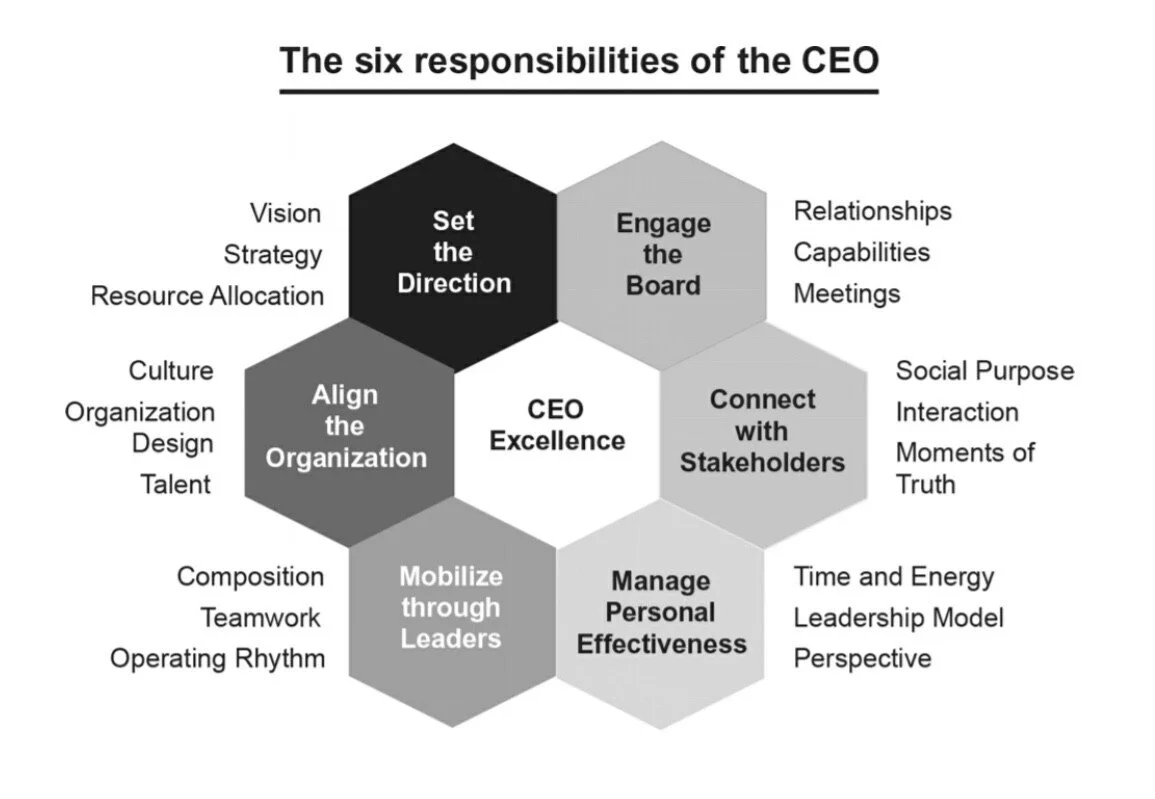It’s been almost 18 months since I stepped into the role of CEO at StackAdapt. This is the first time I’m writing about the new role and what it’s been like. That’s partly because things were quite busy, and partly because I wanted to really get a feel for the job first.
When I stepped into the role, I rushed to fill the gaps in my experience by reading and meeting with current and former CEOs. There’s been a ton of learning over this period, and I’ll try to write about it more as time goes on. But today, I want to unpack a framework from a book, one of my favorite reads in the past couple of years, called CEO Excellence. What I found helpful about this framework is that it very clearly articulated what exactly a CEO should do. It’s saved on my phone, and over the past year and a half I’ve kept coming back to it whenever I needed direction. So this framework stood the test of (at least some) time and has proven to be useful, which is why I feel comfortable sharing it.
The book does a great job walking through each of the six components, and I won’t try to do it justice by repeating it. Some of it is fairly self-explanatory even at this resolution.
What was helpful about it was periodically referring to this framework to check in across all responsibilities and do a bit of self-reflection, whether I am overindexing on one or a few of these responsibilities and neglecting others. (Whether all six are of equal importance is beyond the scope of this article.)
The framework has provided a ton of clarity. In fact, reflecting on my past job experiences, it wasn’t until I started my own company that I really, truly understood what was required of me. Maybe no one properly explained it, or maybe I was just a bit slow to catch on. But the truth is, I didn’t fully grasp what it takes to be uber-successful in any role I held. I simply did what I was told, which was still helpful but not enough to ascend in a company fast.
When I launched my company, it felt like my wings finally spread. Suddenly, everything was crystal clear. I knew exactly what needed to be done. My attention shifted to how.
But what if starting a business isn’t an option? What could anyone, at any role, with any amount of experience, start doing to separate themselves from the average?
As I was thinking about the framework above, as awesome as it is, I realized I couldn’t think of something equally neat and helpful that could apply to people across the rest of the company, not just to the CEO. So I asked myself – could something like this be made for a manager at any level? Or for an individual contributor (IC)?
I decided to focus on the IC, since they make up the largest portion of any company. Innovation and distribution are two critical aspects for a tech company like StackAdapt, so I decided to look at the role of an Account Executive.
Account Executive Excellence: 6 Responsibilities
1. Owning the Territory
Know the market cold: largest accounts, key events, competitors etc.
Build a clear plan with clear short- and long-term pipeline goals (and dreams!)
2. Aligning Internally
Bring ideas to BDRs and Marketing to coordinate outreach and campaign support.
Drive account visibility and forecasting.
3. Mobilizing the Buying Committee
Map out champions, influencers, blockers, and decision-makers for every account.
Guide the customer through internal alignment, procurement, and transformation with confidence.
4. Engaging the Organization
Partner with leadership and cross-functional teams to bring the right resources into deals. Share what works!
Be the first one to bring new products to customers and give feedback to the Product team.
5. Connecting to the Market
Know the customer's business. Stay sharp on market trends, competitor moves, and customer pain points.
Deliver relevant and timely insights to clients to build trust.
6. Managing Personal Effectiveness
Run a consistent daily rhythm: prospecting, follow-ups, pipeline hygiene, and deal reviews.
Invest in improving your craft – discovery, objection handling, storytelling, negotiation.
Maintain resourcefulness, resilience, and ownership in the face of setbacks.
Originally, I tried creating the framework using ChatGPT, but it generated a mediocre output – heavily jargoned, not able to prioritize what matters. So I edited it a bunch. That being said, there are simply too many jobs for me to consider, so the value of having something that’s B- is better than nothing at all. As such, I created a prompt that you can try applying for any job within an organization:
Using the structure of the book CEO Excellence, create a 6-part framework outlining the key responsibilities of a high-performing [ROLE]. Each responsibility should mirror the spirit of the CEO categories (e.g., direction setting, alignment, mobilization, etc.) but be contextualized for this role. Use clear and actionable language that reflects impact, not just duties.
Perhaps you will find it useful too. Give it a go!

